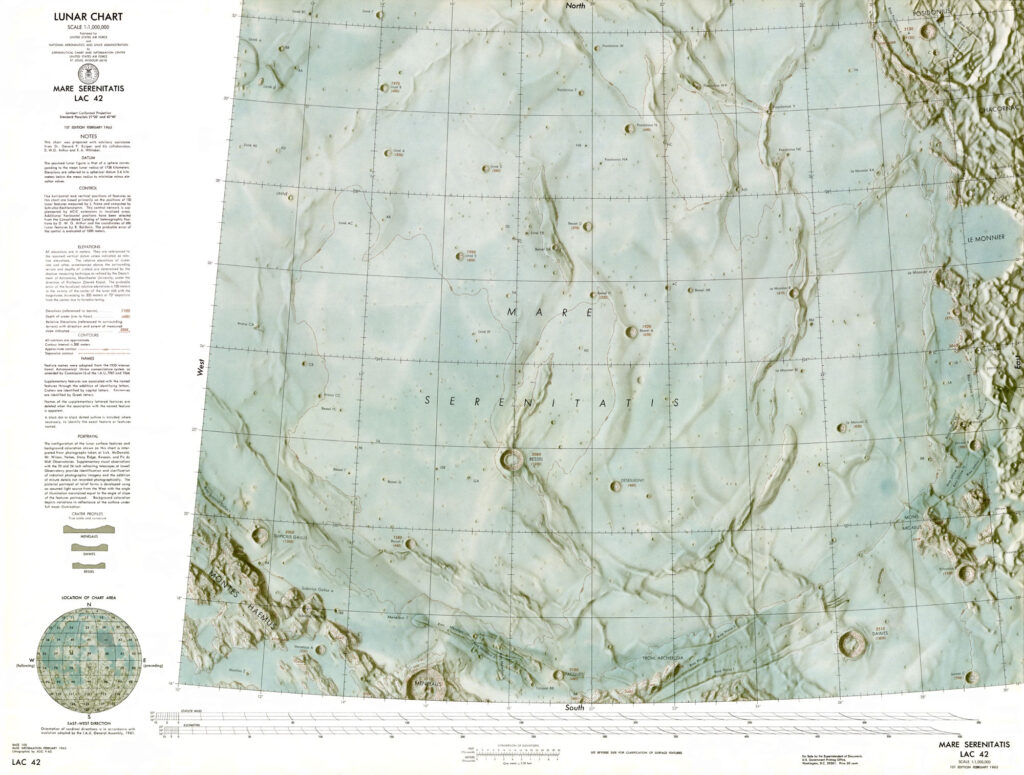The Moon is Earth’s only proper natural satellite. At one-quarter the diameter of Earth (comparable to the width of Australia), it is the largest natural satellite in the Solar System relative to the size of its planet, and the fifth largest satellite in the Solar System overall (larger than any dwarf planet). Orbiting Earth at an average lunar distance of 384,400 km (238,900 mi), or about 30 times Earth’s diameter, its gravitational influence is the main driver of Earth’s tides and slightly lengthens Earth’s day. The Moon is classified as a planetary-mass object and a differentiated rocky body, and lacks any significant atmosphere, hydrosphere, or magnetic field. Its surface gravity is about one-sixth of Earth’s (0.1654 g); Jupiter’s moon Io is the only satellite in the Solar System known to have a higher surface gravity and density.
The Moons orbit around Earth has a sidereal period of 27.3 days, and a synodic period of 29.5 days. The synodic period drives its lunar phases, which form the basis for the months of a lunar calendar. The Moon is tidally locked to Earth, which means that the length of a full rotation of the Moon on its own axis (a lunar day) is the same as the synodic period, resulting in its same side (the near side) always facing Earth. That said, 59% of the total lunar surface can be seen from Earth through shifts in perspective (its libration).
The near side of the Moon is marked by dark volcanic maria (“seas”), which fill the spaces between bright ancient crustal highlands and prominent impact craters. The lunar surface is relatively non-reflective, with a reflectance just slightly brighter than that of worn asphalt. However, because it reflects direct sunlight, is contrasted by the relatively dark sky, and has a large apparent size when viewed from Earth, the Moon is the brightest celestial object in Earth’s sky after the Sun. The Moon’s apparent size is nearly the same as that of the Sun, allowing it to cover the Sun almost completely during a total solar eclipse.
https://en.wikipedia.org/wiki/Moon

https://www.lpi.usra.edu/resources/mapcatalog
https://astrogeology.usgs.gov/search/map/Moon/Geology/Unified_Geologic_Map_of_the_Moon_GIS_v2
https://lunar.gsfc.nasa.gov/
https://arxiv.org/pdf/astro-ph/0405372.pdf The current standard theory of the origin of the Moon is that the Earth was hit by a giant impactor the size of Mars causing ejection of iron poor impactor mantle debris that coalesced to form the Moon.But where did this Mars-sized impactor come from?
https://www.psi.edu/epo/moon/moon.html Two PSI senior scientists, Dr. William K. Hartmann and Dr. Donald R. Davis, were the first to suggest the leading modern hypothesis of the moon’s origin, in a paper published in 1975 in the journal Icarus.
https://arxiv.org/pdf/2007.02965.pdf We simulate the hypothesised collision between the proto-Earth and a Mars-sized impactor that created the Moon. Amongst the resulting debris disk in some impacts, we find a self-gravitating clump of material. It is roughly the mass of the Moon, contains ∼ 1% iron like the Moon, and has its internal composition resolved for the first time.
